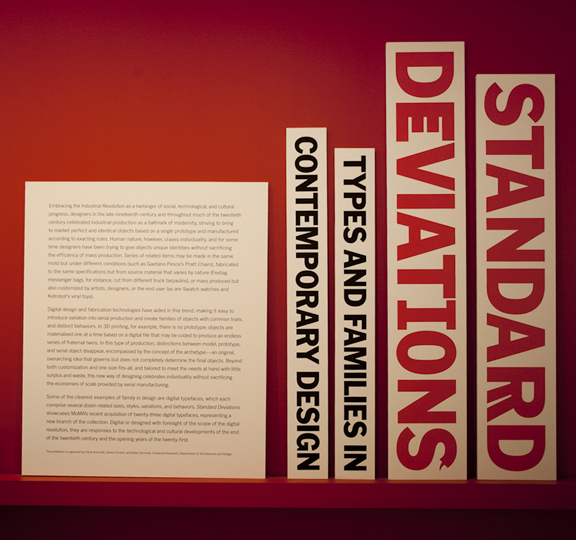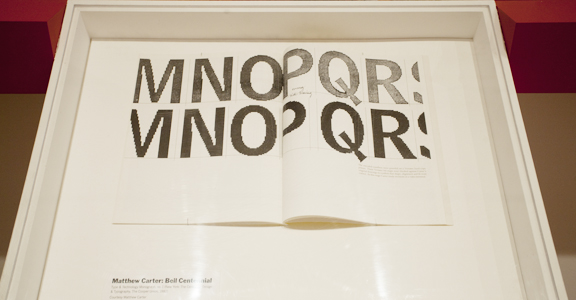I spent the day at the Museum of Modern Art in Manhattan. It’s a delightful place, filled with paintings and sculptures dating from the late 19th century to the present.
Famous for its industrial design displays and its graphic art, MOMA has occasionally turned its attention to typography.
In the current exhibits is an homage to a new set of 23 digital typefaces that have been acquired by the Museum. These are on display on the Second Floor in a show entitled Standard Deviations.
With a strong bias toward the work of Matthew Carter and Zuzana Licko, the show has examples of alphabets on the walls, and special animated videos on a series of computers on one counter. The animations were done by Émigré Fonts in Berkeley (and one features an incorrect apostrophe!). There are a few fonts by Hoefler-Jones, and a couple of independents also.
This is one of several panels showing the Museum’s new additions of digital type fonts.
There are handsome display panels explaining typographic basics, terminology, and technique, and on each of the examples is a description of the artist and his or her motivation for making the alphabet on display.
Matthew Carter’s Bell Gothic Bold is shown here in a display case. The font, which was designed by Carter for AT&T telephone directories, is also shown at appropriate sizes (8 pt. or smaller for the directory) and inappropriately — about four inches tall for the large display.
I always feel proud when a museum or a non-graphic arts organization or publication brings attention to the work of typographic artists. It’s nice that they have their moment in the spotlight.
MOMA’s acquisition and display of these digital fonts is appropriate and well-deserved.




